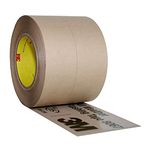
How many of you, standing back 10 –to– 15 years ago, would have imagined the total conversion in the building industry, not only accepting, but embracing and even championing green causes? I am currently attending the Residential Energy Services Network’s, otherwise known as RESNET® Conference in Raleigh, North Carolina.
Along with interest in all the government stimulus money aimed at energy remodeling, I see lots of genuine interest in formally far out concepts like the Passiv Haus. What’s Passiv Haus? It is German for, well… “Passive House,” and refers to a method of building zero-energy consuming homes developed in Darmstadt, Germany, back in 1990, when green was still a fringe thing in the USA (remember tree hungers and eco-terrorists?).
Fast forward twenty years, and the US Department of Energy (DOE) has firmly established a program to entice, and challenge America’s mainline homebuilders to construct net zero energy homes. The Builder’s Challenge, a program started during the Bush years, and similar, but not as radical as Passiv Haus, has already stimulated the construction of about 2,500 net zero homes as of February 2010. It focuses on residential. The Passiv Haus program includes buildings from homes and hotels to US army barracks (the U.S. army was among the to embrace the Passiv Haus concept for its German bases) that have no connection to the power grid by virtue of designing the building to exploit natural light, radiant heat, convection cooling, and, of course, alternative energy.
A Balance of Power
Our net zero concept envisions homes still connected, but not totally dependent on the local utilities. In simple form, our version of “zero” is a home built in the old fashioned way, – albeit the greatly new and improved old fashioned way – but designed to produce as much alternative energy as it consumes conventional energy, and thus sell excess energy during low usage periods, such as during the day, while buying most of it back at peak usage, such early evening, resulting in a kind of homeostasis between the home owner and energy grid, resulting in a net zero, or break even, utility equation when averaging costs over a year.
This year’s hot topic at the energy rater’s conference is retrofitting older homes for dramatic improvements in energy efficiency. Energy remodeling that includes shell (exterior walls, roof, and sometimes foundation) improvements, insulation upgrades, and alternative energy, such as solar panels, now accessible through energy modeling that allows an owner to see the cost vs. economic benefits of energy efficiency improvements. At far end of which, a once lofty goal of net zero energy consumption has become achievable even in a standard remodel.
Bill Asdal proved this about ten years ago, when he constructed the nation’s first net zero remodel in Raritan, New Jersey. Now an ecotourism destination called the Raritan Inn, a bed and breakfast where you can see, and study, wind, solar, earth, and water power at work. And they have a nice trout stream.
While at this year’s International Builder’s Show (IBS), the most relevant model home (and the only one actually constructed) was a net-zero remodeling called ReVision Home, subject of my next blog. Given the economic and ecologically impact of upgrading the nation’s existing housing stock vs. building new ones, no matter how green, the message of net zero remodeling could not have come at a better time. Energy remodeling is, coincidently, the only growth sector in the construction industry, a fact belayed by the attendance numbers at this energy conference, up 30-percent from last year vs. IBS, down at least 30-percent.
Nevertheless, homeowners have been slow to embrace the full range of energy improvements now available, and the construction industry stunned by the recent economic reversal has been slow in selling energy benefits. For example, the National Realtors Association, enamored of time gone by, opposes any kind of national energy labeling program for existing homes.
A labeling system, such as the proposed Home Star program, a federal program that would provide direct incentives to American homeowners who invest in improving the energy efficiency of their homes, would surely create an incentive to upgrade efficiency as a tool to distinguish your house in the marketplace. But Realtors oppose this, preferring to “inform without labeling.” Labeling would show just how many inefficient homes still exist on the market. Why buy one of these? Good question, realtor’s don’t want you to ask.
The construction industry, on the other hand, is becoming better educated and excited about the prospects of improving our housing stock, both new, and more significantly, existing. In time, we may learn how to list consumer expectations in line with what we can deliver—high quality, super-efficient homes that keep pace with modern global technology.
Fine Homebuilding Recommended Products
Fine Homebuilding receives a commission for items purchased through links on this site, including Amazon Associates and other affiliate advertising programs.

Handy Heat Gun

8067 All-Weather Flashing Tape

Reliable Crimp Connectors

The materials paving the road to recovery.



















View Comments
My personal opinion as to why homeowners are slow to use the energy effecient ideas is that they are almost always more to significantly more expensive at build. And a lot of the upgrades seem that they lilewise can take a while to pay back initial expense. I don't know, but I wouldn't be surprised if the insulation in one of the passiv haus setup is one of the highest amount paid in construction. Please don't get me wrong. I really like to learn about energy efficiency and work very hard when doing business to perform the highest form of efficiency that is available to me. I am just providing a possible explanation in response to your post above.
The biggest thing for Americans to learn with houses is that bigger is not better. You can build a 1200 sqft house with 20 to 30 r in the walls and more in the ceiling and design the house for and install a wood burner and then you have eliminated the need for almost any forced air heating and depending on the stove, you can run water through it to heat it.